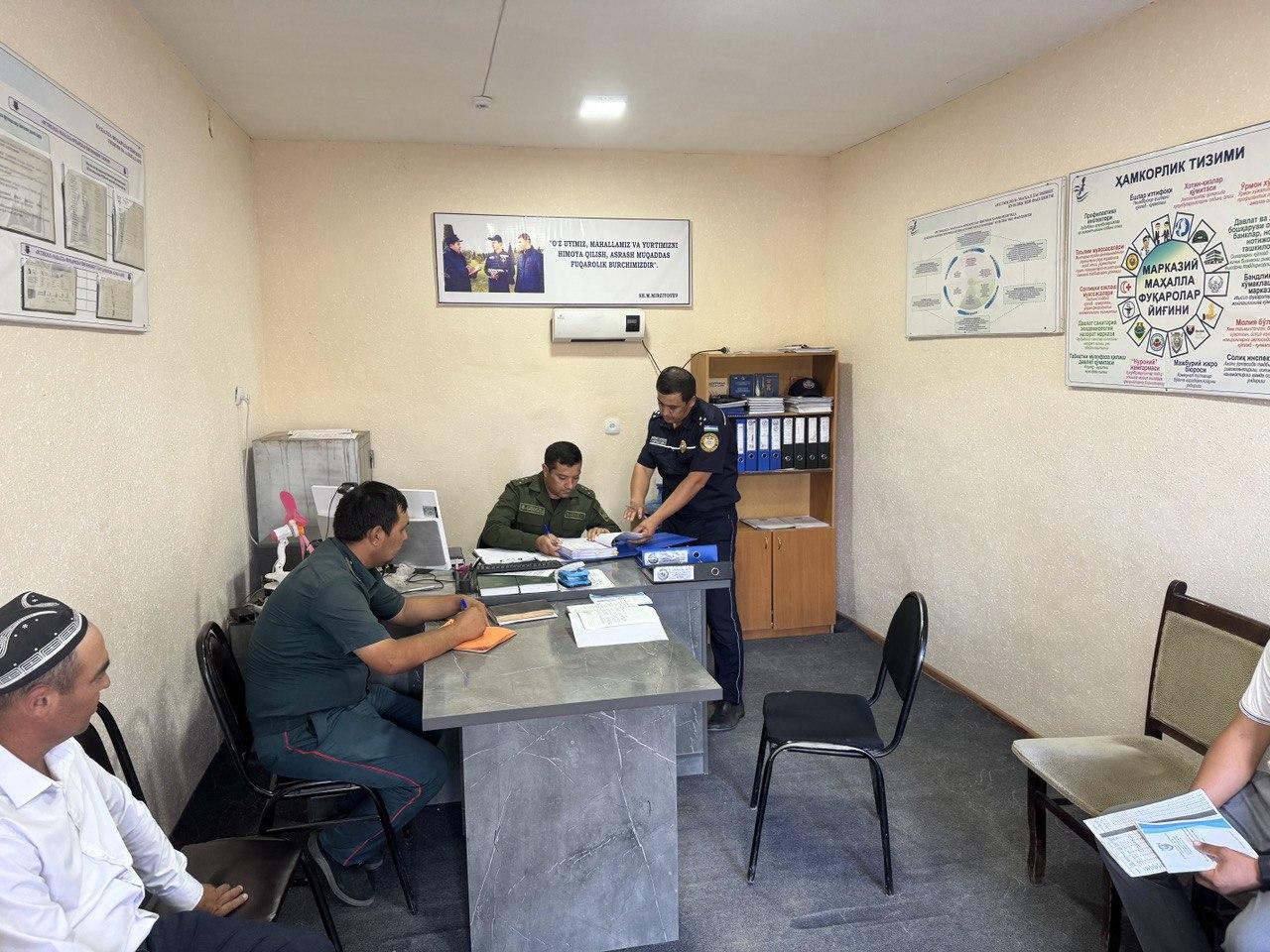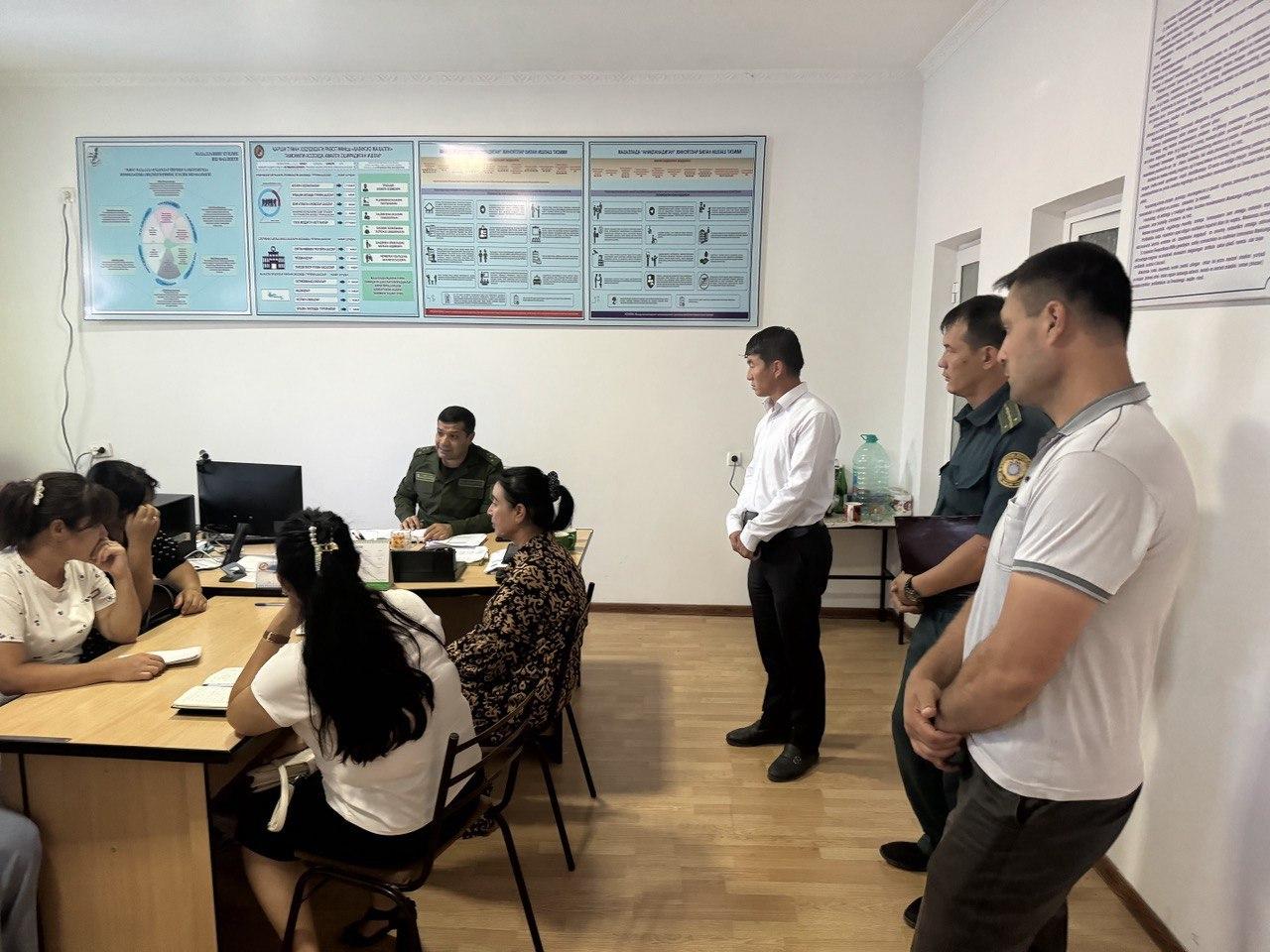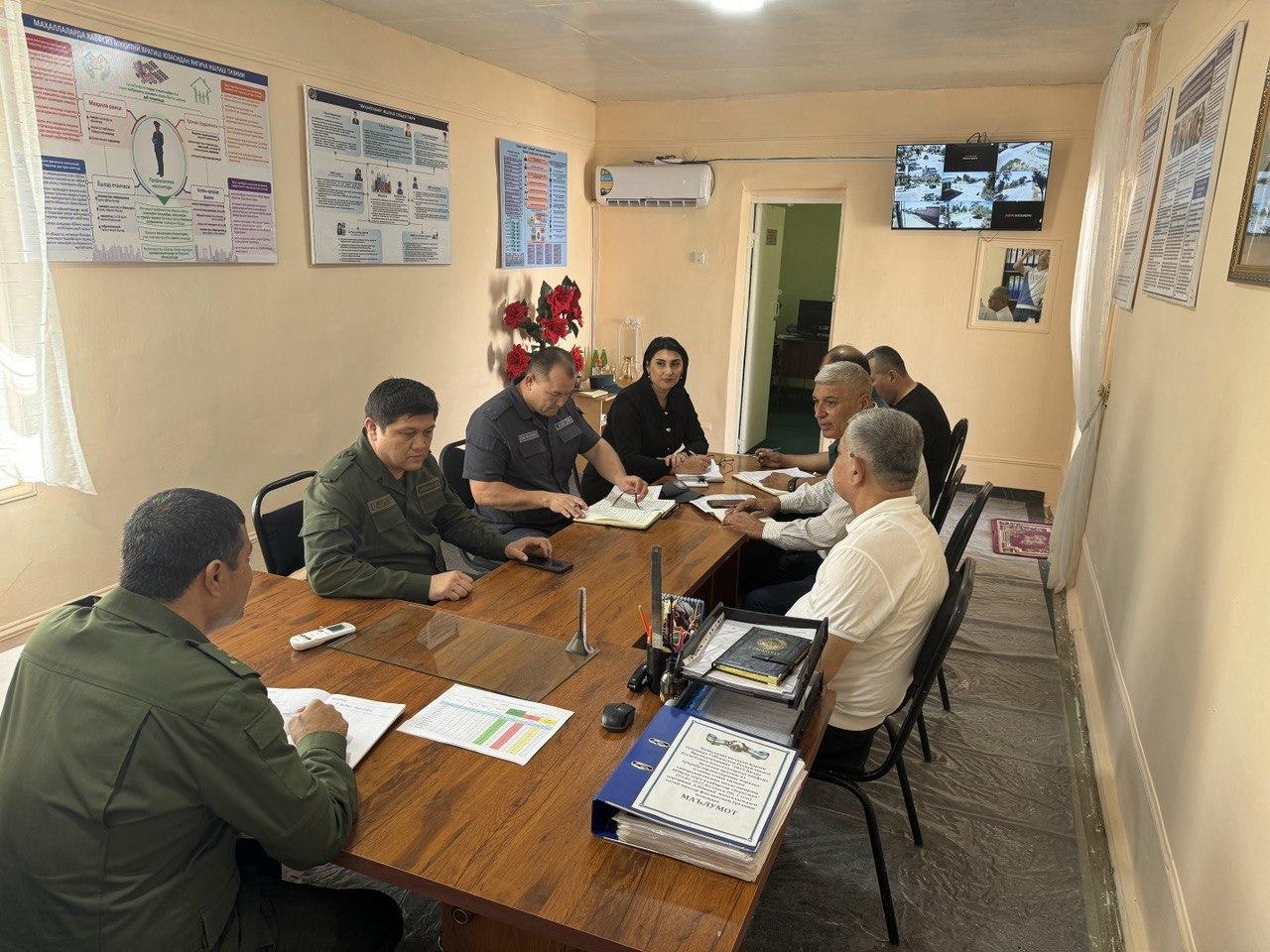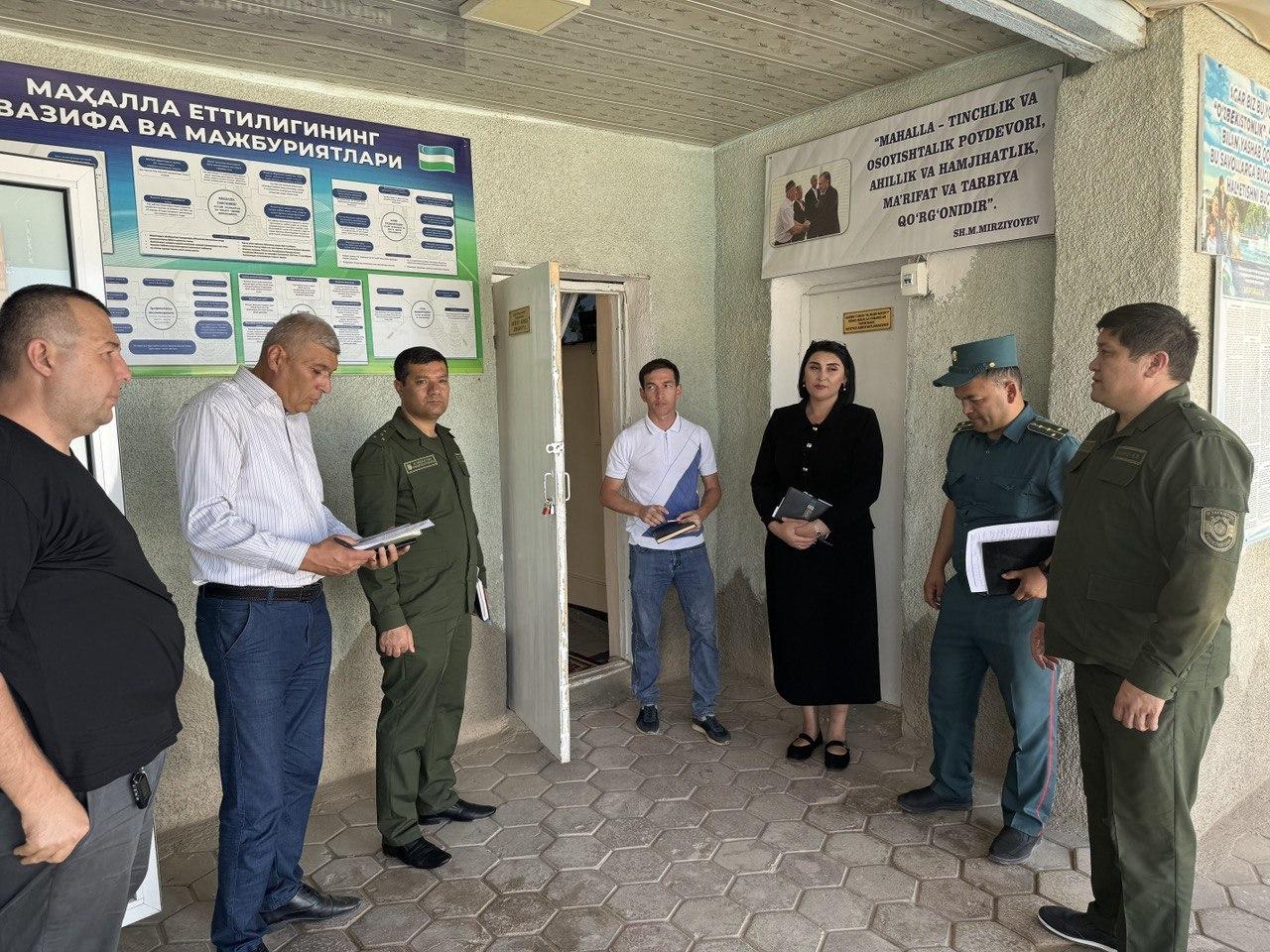Study of the criminogenic situation in mahallas of Kashkadarya region based on scientific approaches
The working group of the Law Enforcement Academy carried out a study in the mahallas of “Karlikkhona”, “Khujakhiyol”, “Komilon” (Karshi city), “A. Navoi”, “Pakhtazor”, “Pakhtakor”, “Istiqlol”, “Kat”, “Batosh”, and “Tinchlik” (Karshi district); “Dustlik”, “Yuksalish”, “Denov” (Kasbi district); “Apardi”, “Yangi Hayot”, “Chakar” (Guzar district); “Istiqlol”, “Torkopchigoy” (Dehkanabad district); “Bogishamol”, “Tankhoz”, “Chorshanbe”, “Kutchi” (Shakhrisabz district); “Kozigu zar,” “Sohibqiron”, “Kamolot” (Shakhrisabz city); “Oltindala”, “Belamish”, “Umakay” (Kukdala district); “Sanam”, “Nurafshon”, “Shurobsoy”, “Tashkent”, “Kh. Olimjon” (Kitab district) on issues of the timely detection of offenses and crimes, as well as their prevention on the basis of scientific approaches.
The specialists studied and analyzed the causes and factors influencing the criminogenic situation in the mahallas, the conditions creating grounds for the commission of crimes, as well as social and everyday problems and the state of ongoing preventive work.
Based on the results of the study, taking into account the specific characteristics of each mahalla, scientifically grounded proposals and recommendations were developed, aimed at: strengthening control measures in places of mass gatherings (markets, retail outlets, public catering facilities, etc.) for the timely prevention of offenses, organizing general preventive measures focused on increasing the population’s attentiveness to the safety of their own property, conducting off-site court hearings to explain the legal consequences of committing offenses; implementing victimological prevention in relation to individuals who have committed offenses, systematically raising the legal awareness and culture of the population in order to reduce the likelihood of becoming victims of cybercrime and fraud, and ensuring early crime prevention.
The above-mentioned proposals and recommendations were summarized and submitted to the responsible authorities for inclusion in future “road maps” aimed at improving the criminogenic situation.




